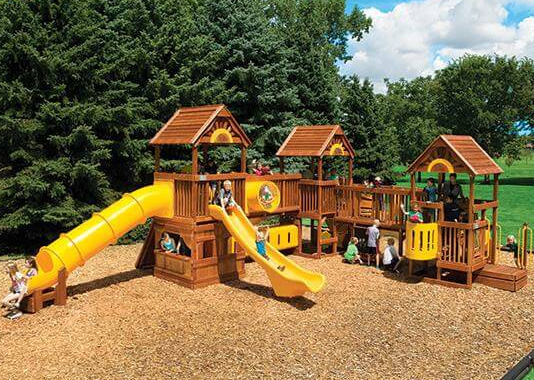Understanding Sustainability in School Playgrounds
Sustainability in school playgrounds goes beyond merely using eco-friendly materials. It encompasses long-term environmental, economic, and social aspects. When choosing sustainable school playground equipment, consider the lifecycle impact of materials, the equipment's ability to be recycled at the end of its lifespan, and the energy used in manufacturing and transportation.
Selecting Eco-Friendly Materials
The choice of materials is crucial. Opt for playground equipment made from recycled plastic, sustainably sourced wood, or metal with low environmental impact. Recycled plastic, for instance, reduces landfill waste and often requires less energy to manufacture. Wood should be certified by organizations like the Forest Stewardship Council (FSC) to ensure it comes from responsibly managed forests. Metals should be durable and ideally coated with environmentally safe paints or treatments to resist corrosion.
Energy Efficient Production and Transportation
Seek manufacturers that utilize renewable energy sources in their production processes. The carbon footprint of transporting materials and finished equipment can also be significant. Choosing local manufacturers can reduce transportation distances, thereby lowering greenhouse gas emissions.
Durability and Maintenance
The sustainability of playground equipment is also determined by its durability and ease of maintenance. Durable equipment means fewer replacements and repairs, which, in turn, conserves resources. Stainless steel fasteners, robust joint constructions, and UV-resistant materials help extend the lifespan of playground structures.
Safety and Accessibility
Safety should never be compromised in the pursuit of sustainability. Ensure that the equipment meets all relevant safety standards and is accessible to children of all abilities. This inclusivity not only adheres to ethical standards but also ensures that the playground can be enjoyed by a broader segment of the community, enhancing its long-term viability.

Community and Educational Impact
Incorporate elements that educate about sustainability. Installations that explain the origins of the materials used or that demonstrate renewable energy (like solar panels on a shelter) can help foster environmental stewardship among young users.
Economic Considerations
While sustainable options might come with a higher upfront cost, they often lead to savings in the long run through reduced maintenance costs and longevity. Moreover, investing in sustainable equipment can often qualify schools for grants or subsidies aimed at promoting green initiatives.
Selecting the Right Supplier
Choose suppliers who are transparent about their materials, supply chain, and manufacturing processes. Suppliers committed to sustainability will typically have detailed reports or certifications to prove their claims. Ensure they offer robust warranties and support, which are indicative of high-quality, long-lasting products.
Installation and End-of-Life Management
Proper installation is essential to ensure the safety and durability of playground equipment. Consider the end-of-life management of the equipment: can it be disassembled and recycled? Choosing products that are designed for easy recycling or even reuse can significantly reduce their environmental impact.
Choosing the right school playground equipment involves balancing several factors, from materials and manufacturing processes to economic and educational impacts. By considering these elements, schools can invest in playgrounds that not only provide fun and safe environments for children but also promote sustainability and environmental responsibility.